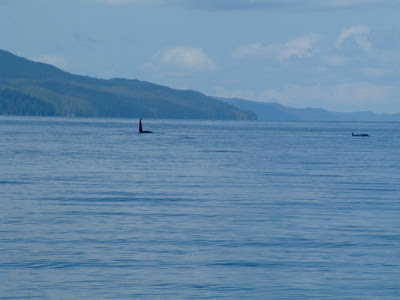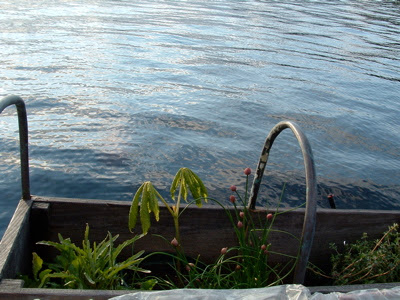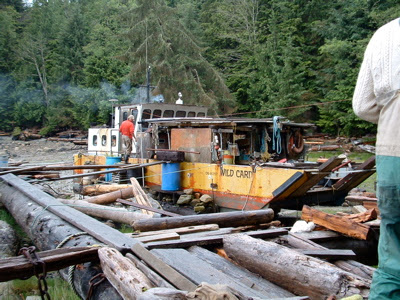
The first grizzly I ever saw was eating sedges in the spring, by a waterfall in Green Inlet. At first we didn’t notice her, just a light brown lump that was there for a long time – but then we saw it move. We realized she was a she when we saw her in the same place the next year and watched her peeing. We called her Ms. Grizz. She was in sad shape this time, patches of fur seemed to be just growing back from an injury, and she was very thin. Again she was concentrating on eating her sedges.
I have a new song this season. It came to me after listening to the sound track from O Brother Where Art Thou. I got the song in my head (to the beat of the windshield wipers) by the young gospel-singing sisters that starts “In the highways and the hedges…” My song goes “On the mud flats, in the sedges…” Mud flats are the rich areas where river estuaries meet the sea; sedges are the bright green, tall grass-like plant that is 30% protein in the spring. Bear habitat. The gospel song goes on “I’ll be somewhere a’ working for my Lord.” Mine goes “we’ll be somewhere watching for our friends. It’s not so much that I used an old tune for a new song - to me it’s the same song, with a different way of describing the Creator and how to connect.
Each of us on board expressed our own version of awe during a brief encounter with a mother grizzly and her 2 cubs on a First Nations-site beach in Return Channel. Through our binoculars the shoreline changed from scenery to someone’s home, the breakfast room for a heart warming family.
On May 22 we were headed into Green Inlet Marine Park to one of our favourite tucked in little anchorages, Horsefly Cove, looking out for Ms Grizz. Last summer Thomas saw her with a tiny dark cub. As we approached this time, something didn’t feel right. Logs everywhere. There are log booms all over the cove, and around past the waterfall creek and sedges that grizzlies love.

Little Marian Islet and Heather Reef, named after young guests our first summer sailing in 1999, were covered with logs.

Green Inlet Marine Park is proudly described in our “Coastal Marine Parks of British Columbia” brochure. You hear about agreements to protect Princess Royal Island and its white Kermode bears, but here is Green Inlet, just across Tolmie channel from Princess Royal, already a Marine Park, full of log booms. Who could we report this to, and how? We are far from telephone or Internet access. What can we do?
Well, we had to make the best of it. We tied to a log boom, with a hemlock Christmas tree just outside the cockpit. No chance of wildlife now. But looking across our log boom tie to the sedges by the waterfall, after a while out comes Ms Grizz and her 2 fine year-old cubs. The sedges were just right, and we watched them munch away through our supper and on past our bedtime. Irony. How will our grizzly friends fare with today’s logging?
 Ms. Grizz is munching on the left of the old log, her two cubs are on the right.
Ms. Grizz is munching on the left of the old log, her two cubs are on the right.


































